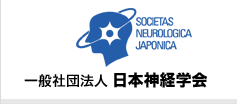- HOME
- Vol.50 No.6
- CLINICA NEUROL, 50: 385−392, 2010
- Vol.50 No.6 contents
Original Article
Clinical features of idiopathic restless legs syndrome in Japanese patients
Akito Kume, M.D.1)2) and Hideaki Kume, M.D.1)
1)Kume Clinic2)Nagoya Clinical Neuropharmacology Laboratory
Background: Little is known about the diagnosis and management of restless legs syndrome (RLS) in Japanese neurology clinics. Objective: To validate the diagnostic criteria of the International RLS Study Group (IRLSSG) and the treatment algorithm of the Mayo Clinic in a Japanese neurology clinic setting and to clarify the features of Japanese patients with idiopathic RLS. Methods: Patients with RLS symptoms were examined by a neurologist and the assessment included neurological examination, tests for periodic limb movements (PLM) and dopaminergic response, and the clinical diagnosis was made according to IRLSSG diagnostic criteria. Patients diagnosed with idiopathic RLS were treated with dopaminergic agents and the efficacy was evaluated. Results: The study subjects were 151 Japanese patients who presented with RLS symptoms. Idiopathic RLS was diagnosed in 113 patients, secondary RLS in 16 and RLS mimics in 22. The cause of RLS mimics was either myelopathy, radiculopathy or neuropathy in 11 patients. The mean age of patients with idiopathic RLS was 50.1 (SD 20.0) years, 63% were woman, 97% had daily RLS, 31% had family history (40% of the early-onset subgroup), 86% reported unpleasant sensations in the lower legs, 43% had PLM in the daytime suggested immobilization test, 81% suffered from insomnia, 49% had limitations of work and activities, 71% reported impaired mood, 27% had consulted physicians about their symptoms, 4% had been diagnosed with RLS, 73% improved after dopaminergic treatments, and 33% experienced complete remission. Conclusions: The clinical features of Japanese patients with idiopathic RLS were identical to those reported in western countries, which suggests that IRLSSG diagnostic criteria and Mayo Clinic treatment algorism are valid in Japanese neurology clinics. Both patients and physicians were not fully aware of RLS in this country. Neurological examination was important in excluding RLS mimics and making a diagnosis of RLS.
Full Text of this Article in Japanese PDF (636K)
(CLINICA NEUROL, 50: 385−392, 2010)
key words: Restless legs syndrome, Neurological examination, Unpleasant sensation, Periodic limb movement, Dopamine agonist
(Received: 11-Nov-09)


